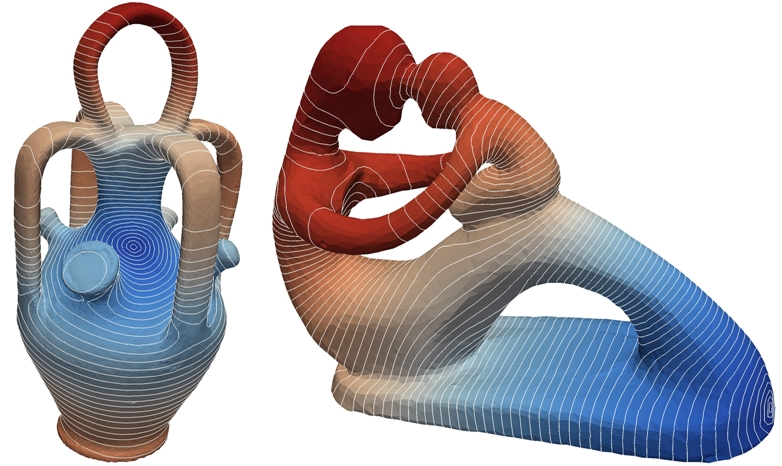Biharmonic Distance
ACM Transactions on Graphics, June 2010

Biharmonic distance from a source point (darkest blue). Red points are furthest from the source. White lines are equally spaced in distance
Abstract
Measuring distances between pairs of points on a 3D surface is a fundamental
problem in computer graphics and geometric processing. For most applications,
the important properties of a distance are that it is a metric, smooth,
locally isotropic, globally “shape-aware,” isometry invariant, insensitive to
noise and small topology changes, parameter-free, and practical to compute
on a discrete mesh. However, the basic methods currently popular in computer
graphics (e.g., geodesic and diffusion distances) do not have these
basic properties. In this paper, we propose a new distance measure based on
the biharmonic differential operator that has all the desired properties. This
new surface distance is related to the diffusion and commute-time distances,
but applies different (inverse squared) weighting to the eigenvalues of the
Laplace-Beltrami operator, which provides a nice trade-off between nearly
geodesic distances for small distances and global shape-awareness for large
distances. The paper provides theoretical and empirical analysis for a large
number of meshes.
Links
Citation
Yaron Lipman, Raif Rustamov, and Thomas Funkhouser.
"Biharmonic Distance."
ACM Transactions on Graphics 29(3), June 2010.
BibTeX
@article{Lipman:2010:BD,
author = "Yaron Lipman and Raif Rustamov and Thomas Funkhouser",
title = "Biharmonic Distance",
journal = "ACM Transactions on Graphics",
year = "2010",
month = jun,
volume = "29",
number = "3"
}